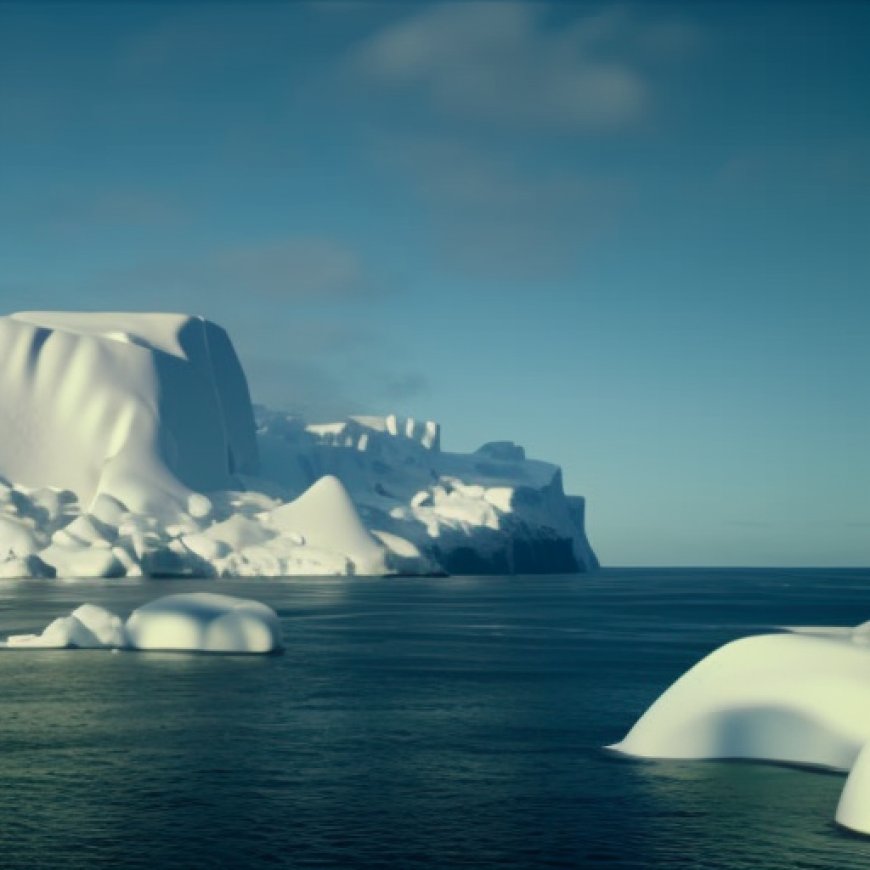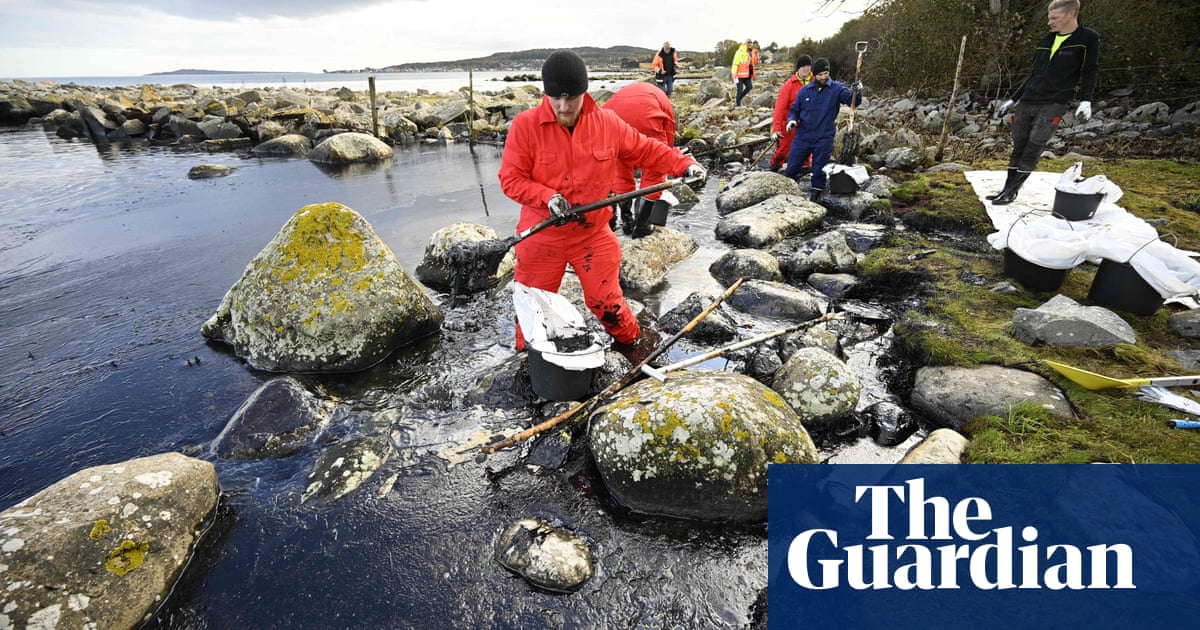Baltic Sea faces ‘critical challenges’ on climate and biodiversity, report warns
Baltic Sea faces ‘critical challenges’ on climate and biodiversity, report warns The Guardian


The Baltic Sea Faces Critical Challenges, Report Warns

The Baltic Sea faces “critical challenges” due to the climate crisis and degradation of biodiversity, a report has said, as Sweden’s coastguard battled to contain the impact of an oil spill off the country’s southern shore.
In the most comprehensive audit of its kind to date, experts at the Baltic Marine Environment Protection Commission (Helcom) said on Tuesday there had been “little to no improvement” in the health of the body of water between 2016 and 2021.
Fish stocks were at dangerously low levels, while pollution, land use, and resource extraction continued to put pressure on the sea, the report said.
Oil Spill Off Sweden’s Southern Shore
- The Swedish coastguard extracted about 20 cubic meters of oil from the Baltic on Monday, bringing the total to about 50 cubic meters.
- The oil spill occurred after a ferry ran aground three times off Hörvik in southern Sweden.
- The coastguard hopes to salvage the ferry, Marco Polo, on Wednesday to prevent further oil spills.
Surrounded by nine countries including Sweden, Finland, Denmark, and Russia, the Baltic’s relatively shallow, low-saline, brackish enclosed water makes it a unique marine environment. These properties also mean it is especially vulnerable to pollution and changing environmental conditions.
State of the Baltic Sea 2023 Report
- The report found that overall conditions in the Baltic Sea had not improved between 2016 and 2021.
- Human activities including pollution, overfishing, and habitat destruction had affected the ecosystem, leading to a decline in biodiversity.
- Eutrophication, caused by excess nutrients such as nitrogen and phosphorus, was also a problem.
- The poor environmental status of the Baltic Sea was affecting the profitability of fisheries and tourism.
Reductions in nutrient inputs and hazardous substances, as well as work on biodiversity and conservation, showed signs of success in some parts of the Baltic. Several former pollution hotspots were removed from the latest assessment, and the share of marine protected areas in the region was increasing.
However, the report highlighted that the climate crisis was increasingly impacting the Baltic Sea, resulting in reduced ice cover, more extreme weather, and rising water temperatures.
Sustainable Development Goals (SDGs)
The Baltic Sea action plan, devised by Helcom in 2021, calls for strengthened biodiversity, a reduction in environmental pressures, and an improvement in the overall health of the Baltic’s ecosystem. These goals align with the Sustainable Development Goals (SDGs) set by the United Nations.
Jannica Haldin, the deputy executive secretary of Helcom and coordinator of the report, emphasized the need for transboundary cooperation, environmentally sustainable practices, and long-term commitment to address the critical challenges faced by the Baltic Sea.
She stated, “Ensuring that the Baltic Sea ecosystem maintains and improves its function is entirely dependent on how well we can manage our activities to ensure that they are truly sustainable and enhance the resilience of the ecosystem, both in the near future and long term.”
SDGs, Targets, and Indicators
-
SDGs Addressed or Connected to the Issues
- SDG 14: Life Below Water – The article discusses the critical challenges faced by the Baltic Sea due to the climate crisis and degradation of biodiversity.
- SDG 13: Climate Action – The article mentions the impact of the climate crisis on the Baltic Sea, including reduced ice cover, more extreme weather, and rising water temperatures.
- SDG 15: Life on Land – The article highlights the negative effects of human activities, such as pollution, overfishing, and habitat destruction, on the ecosystem and biodiversity of the Baltic Sea.
-
Specific Targets
- SDG 14.1: By 2025, prevent and significantly reduce marine pollution of all kinds, particularly from land-based activities, including marine debris and nutrient pollution – The article mentions pollution as one of the critical challenges facing the Baltic Sea.
- SDG 14.2: By 2020, sustainably manage and protect marine and coastal ecosystems to avoid significant adverse impacts, including by strengthening their resilience, and take action for their restoration in order to achieve healthy and productive oceans – The article discusses the need for strengthened biodiversity and an improvement in the overall health of the Baltic’s ecosystem.
- SDG 14.7: By 2030, increase the economic benefits to small island developing states and least developed countries from the sustainable use of marine resources, including through sustainable management of fisheries, aquaculture, and tourism – The article mentions that the poor environmental status of the Baltic Sea is affecting the profitability of fisheries and tourism.
- SDG 13.1: Strengthen resilience and adaptive capacity to climate-related hazards and natural disasters in all countries – The article highlights the impact of the climate crisis on the Baltic Sea, including reduced ice cover, more extreme weather, and rising water temperatures.
-
Indicators
- Indicator 14.1.1: Index of coastal eutrophication and floating plastic debris density – The article mentions eutrophication as a problem in the Baltic Sea, which is a form of marine pollution caused by excess nutrients.
- Indicator 14.2.1: Proportion of national exclusive economic zones managed using ecosystem-based approaches – The article discusses the need for sustainable management and protection of marine and coastal ecosystems in the Baltic Sea.
- Indicator 14.7.1: Sustainable fisheries as a proportion of GDP in small island developing states, least developed countries, and all countries – The article mentions that the poor environmental status of the Baltic Sea is affecting the profitability of fisheries.
- Indicator 13.1.1: Number of deaths, missing persons, and directly affected persons attributed to disasters per 100,000 population – The article highlights the impact of the climate crisis on the Baltic Sea, including more extreme weather.
Table: SDGs, Targets, and Indicators
| SDGs | Targets | Indicators |
|---|---|---|
| SDG 14: Life Below Water | 14.1: By 2025, prevent and significantly reduce marine pollution of all kinds, particularly from land-based activities, including marine debris and nutrient pollution | 14.1.1: Index of coastal eutrophication and floating plastic debris density |
| SDG 14: Life Below Water | 14.2: By 2020, sustainably manage and protect marine and coastal ecosystems to avoid significant adverse impacts, including by strengthening their resilience, and take action for their restoration in order to achieve healthy and productive oceans | 14.2.1: Proportion of national exclusive economic zones managed using ecosystem-based approaches |
| 14.7: By 2030, increase the economic benefits to small island developing states and least developed countries from the sustainable use of marine resources, including through sustainable management of fisheries, aquaculture, and tourism | 14.7.1: Sustainable fisheries as a proportion of GDP in small island developing states, least developed countries, and all countries | |
| SDG 13: Climate Action | 13.1: Strengthen resilience and adaptive capacity to climate-related hazards and natural disasters in all countries | 13.1.1: Number of deaths, missing persons, and directly affected persons attributed to disasters per 100,000 population |
| SDG 15: Life on Land | N/A | N/A |
Behold! This splendid article springs forth from the wellspring of knowledge, shaped by a wondrous proprietary AI technology that delved into a vast ocean of data, illuminating the path towards the Sustainable Development Goals. Remember that all rights are reserved by SDG Investors LLC, empowering us to champion progress together.
Source: theguardian.com

Join us, as fellow seekers of change, on a transformative journey at https://sdgtalks.ai/welcome, where you can become a member and actively contribute to shaping a brighter future.







